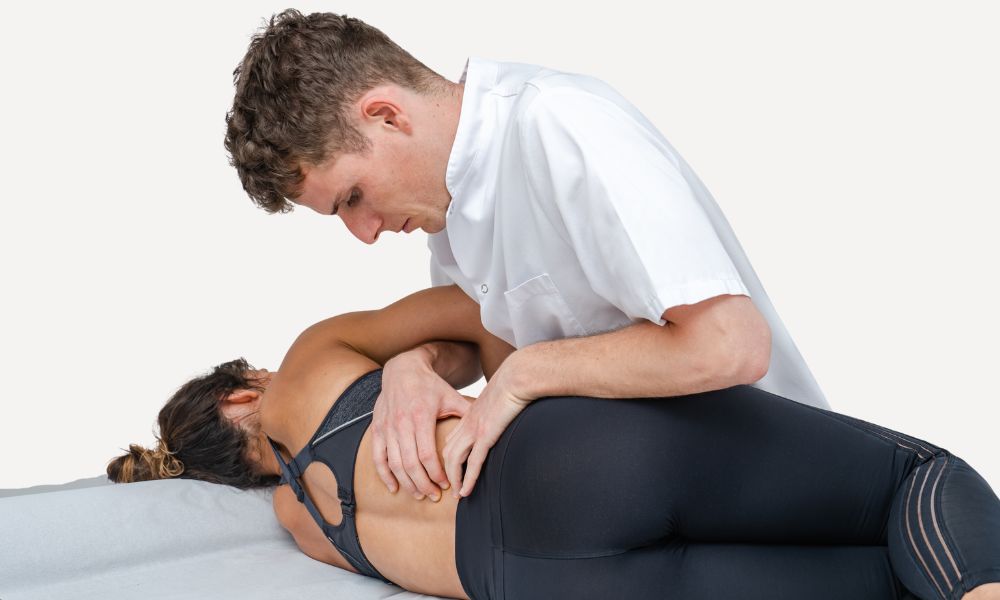Craniosacral Therapy (CST) is a gentle, hands-on approach that focuses on evaluating and enhancing the craniosacral system—the membranes and cerebrospinal fluid surrounding the brain and spinal cord. By applying light touch, practitioners aim to release tensions deep within the body, promoting pain relief and overall health. CST has been found beneficial for various conditions, including chronic pain, migraines, and stress-related disorders.
While working with a qualified CST practitioner is recommended for more targeted and comprehensive care, there are simple self-care techniques you can try at home to help relax your nervous system and encourage the natural flow of cerebrospinal fluid.
Self-Care Techniques Inspired by Craniosacral Therapy
Still Point Induction
- Lie down on your back in a comfortable position.
- Place two small, firm objects like tennis balls or rolled-up socks under the base of your skull.
- Relax your head onto the objects and allow gravity to create a gentle release in your neck and head.
- Stay in this position for 5–10 minutes, focusing on slow, deep breathing. This can help calm your nervous system and relieve tension.
Diaphragmatic Breathing
- Sit or lie down in a comfortable position.
- Place one hand on your chest and the other on your abdomen.
- Inhale deeply through your nose, allowing your abdomen to rise while keeping your chest still.
- Exhale slowly through your mouth, noticing the abdomen lower.
- Repeat for 5–10 minutes. This practice can help release physical tension and regulate the craniosacral rhythm.
Pelvic Rocking
- Lie on your back with your knees bent and feet flat on the floor.
- Slowly tilt your pelvis upward, flattening your lower back against the floor, and then tilt it downward, creating a gentle arch in your back.
- Repeat this movement for 1–2 minutes, focusing on the gentle rocking motion. This can release tension in the lower back and pelvis, promoting fluid movement throughout the body.
Mindful Touch
- Find a quiet space where you can sit or lie down comfortably.
- Place your hands lightly over your head, heart, or any area that feels tense.
- Close your eyes and focus on the warmth and gentle pressure of your hands. Imagine releasing tension with every exhale.
- Spend 3–5 minutes in this state, tuning into your body’s natural rhythms.
These simple techniques can be performed regularly to support your overall well-being. However, they are not a substitute for professional care if you’re dealing with chronic conditions or deeper imbalances.
Reputable Craniosacral Therapy Practitioners in Cape Town
For those seeking professional care, several practitioners in Cape Town offer Craniosacral Therapy:
- Path to Health Integrative Medicine Clinic
Located in Cape Town, this clinic provides Craniosacral Therapy as part of its holistic treatment programs. (pathtohealth.co.za) - Physio Cape Town
This practice offers Craniosacral Therapy, emphasizing its gentle, hands-on method to enhance the craniosacral system. (physiocapetown.co.za) - Dr. Sandra Smit
A registered homeopath and craniosacral therapist with practices in Muizenberg, Cape Town, and Stellenbosch. (drsandrasmit.wordpress.com) - Priya Vassen
Offers acupuncture and Craniosacral Therapy at Seven Circles in Gardens, Cape Town. (darshan.co.za)
For a comprehensive list of qualified practitioners, you can consult the Craniosacral Therapy Association of South Africa’s member directory. (cranial.org.za)
Final Thoughts
Craniosacral Therapy is a deeply relaxing and restorative practice that can help alleviate physical and emotional tension. Whether you try self-care techniques at home or work with a trained therapist, CST offers a gentle and effective way to support your overall health.
Take a step toward balance and relief by exploring CST and incorporating these self-care practices into your routine.

